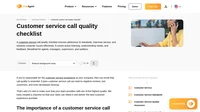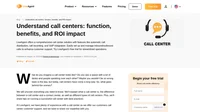- All checklists
- Call Center
- Call center quality assurance checklist
Call center quality assurance checklist

- Start recording the call
- View relevant information in advance
- Prepare for the call with LiveAgent
- Answer the call within x seconds
- Verify the caller’s identity
- Ask appropriate questions
- Assure a willingness to help
- Demonstrate empathy
- Ask the customer how they want the problem resolved
- Set expectations and a timeframe
- Transfer the call to a supervisor/another agent (optional)
- Offer an appropriate solution
- Explain the costs and benefits of different solutions
- Explain the next steps
- Answer all questions
- Say thank you to the customer
- Confirm customer satisfaction
- Review the call quality
- Give feedback to the agent
- Refer the agent for training (if necessary)
Do you run a call center and want to be sure that your team provides the best customer experience? Probably the best way to do this is by using our call center quality assurance checklist.
See how you can use our checklist to improve the efficiency of your call center’s customer service and ensure adherence to your code of practice.
The importance of a call center quality assurance checklist
The beauty of our call center quality assurance checklist is that it will help your team deliver better results in less time. It can be used before or after a call to ensure that you are providing the best customer experience possible.
Going through the checklist is also a great way to audit your call center performance and find areas where the team can improve. Have we mentioned how motivational it is to tick off a task as completed? Plus, everything will be kept organized.
Who can benefit from a call center quality assurance checklist?
- call center representatives to provide the best customer service and improve their skills
- call center managers to ensure that the call center provides the highest level of service
An effective call center monitoring checklist can help you identify growth opportunities, regardless of whether you’re an agent or manager. You may notice things you usually miss or hadn’t noticed before.
Explore the call center quality assurance checklist
A lot of companies use call monitoring software to record their calls so that they can evaluate them later and provide feedback if required. Depending on the type of company you work for, there may be specific regulations regarding when and how long calls must be recorded for.
Why is recording calls important?
Firstly, it helps you monitor and evaluate the team’s performance. Also, some clients may forget what they said earlier in a conversation or dispute their claims down the line – a recording will prove your case if necessary.
How to record calls?
You can use contact center software that records calls automatically, or you can use a recording device like a microphone or headset. Whichever method you choose, be sure to test it out before your first call to avoid any surprises.
It is obligatory to inform your customers at the beginning of each call of being recorded for quality and training purposes.
Tip: When choosing call center software, remember to check its recording options. LiveAgent does, and it doesn’t impose any limits on how many of them you can keep.
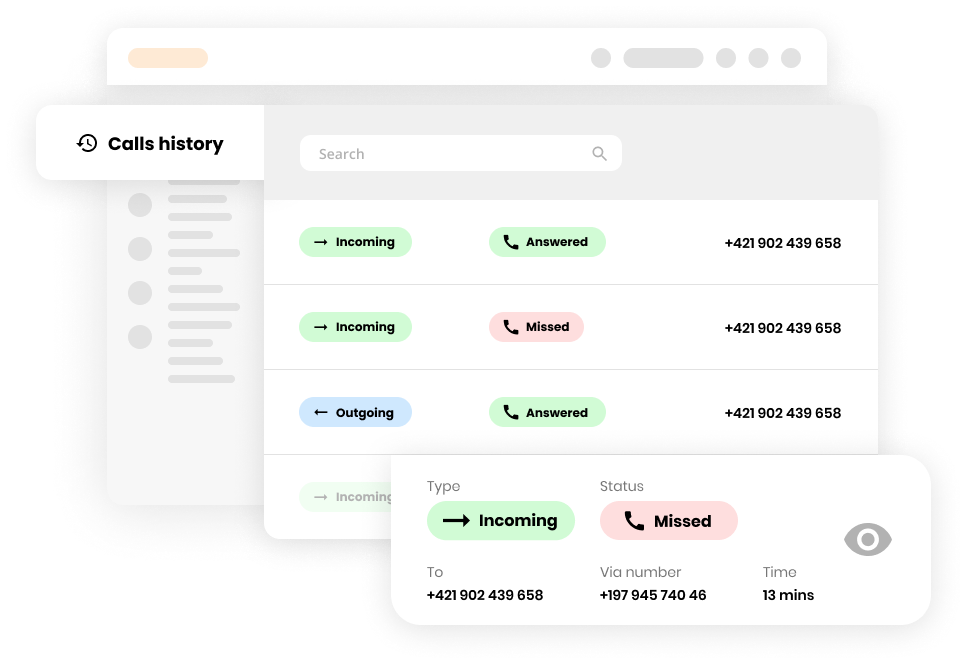
Which tools to use for recording calls?
- the recording feature in most call center software on the market, e.g. LiveAgent with unlimited call recordings – it’s also a solution that enables you to easily access all recordings without the need for 3rd party applications
- headset with built-in recorder
Before each call, review the customer’s account and gather any information that you might need during the conversation.
Why is it important to view relevant information in advance?
Knowing the customer’s account details helps you provide better service and avoid having to ask them for basic details multiple times during the call. Gathering all relevant information before each call will help you avoid common mistakes, and speed up the resolution process.
How to view relevant information in advance?
Use a CRM system or ticket management software that contains all relevant information about your customers. Access and check previous conversations, so you will know if a caller is reoccurring who needs special attention when being handled.
Fill out the ticket with the following information:
- Caller ID / Customer ID / Phone number
- previous conversations (purchases, problems)
- history of transactions
- date
Tip: if you’re using a CRM system, ensure that the customer’s account is linked to their phone number. That way, when you view their details, you’ll also see all the calls and chats they’ve had with your company.
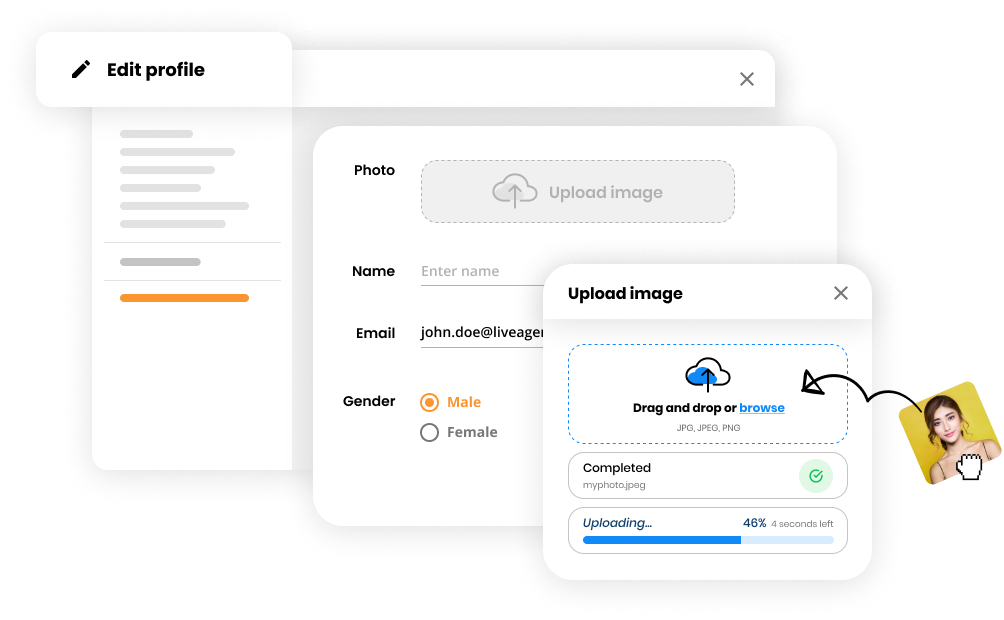
Which tools to use for viewing information in advance?
- most CRMs like HubSpot, Raynet, Zendesk
- LiveAgent ticketing system with CRM for storing and viewing customer information
- VoIP provider with native and external CRM integrations, plus the ability for customers to retrieve their account details when calling
Before you pick up the phone, prepare a script of what to say and how to handle specific situations if they come up. Have relevant documents or contact information readily available because they may be useful during the conversation (e.g. if a customer asks about their account balance).
Why is it important to prepare for calls?
It helps you stay organized and focused during the call, which in turn results in better customer service. You’ll be able to handle difficult situations with ease because you’ll know exactly what to say and how to react.
How can you prepare for calls?
Before your conversation with the customer, you should write down what you plan to say and any questions they may ask. If you’re using LiveAgent, the whole process is a breeze. You can easily prepare for your calls by creating call scripts and notes, so you’ll have everything at hand when you need it and you’ll sound more confident during the call.
Tip: LiveAgent is a complex powerful tool for call centers, offering numerous advanced features. Furthermore, you can test it out with a free trial.
Which tools to use for preparing for calls?
- call scripts
- notes
- CRM system
When a customer calls, they should be able to speak with someone within a particular time frame (the expected response time depends on your company’s requirements).
Why is it important to answer calls quickly?
It shows that you’re attentive and that you care about your customers. It also helps avoid having customers hang up or go to another company because they couldn’t get through to someone in your call center.
How can you answer calls quickly?
Use a call center software that has an automatic call distribution (ACD) feature. This tool allows you to distribute incoming calls among agents in your team so that no one will be overwhelmed with work and everyone gets their share equally distributed. Because they can then manage their workloads much more efficiently, call center automation can really help relieve your call center agents of stress.
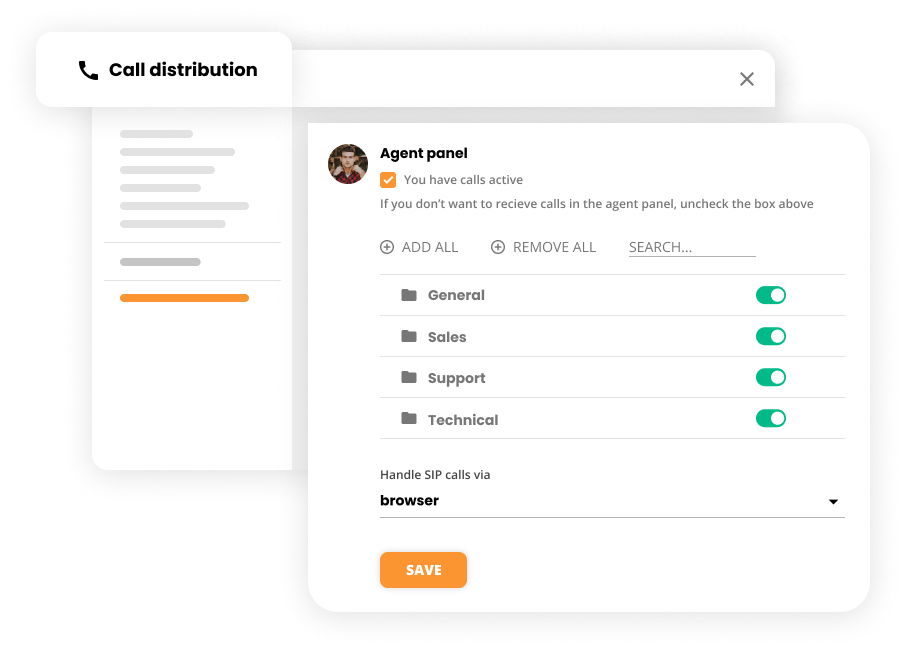
Which tools to use for answering calls quickly?
- ACD – Automatic Call Distribution
- IVR – Interactive Voice Response
- Greeting script
If a customer asks for some sensitive data, you should verify their identity by asking for information that only they could have access to.
Why is it important to verify a caller’s identity?
It prevents fraud and ensures that your customers’ data remain secure. Verifying the identity of the caller is also helpful when more than one household member has access to an account.
How can you verify a caller’s identity?
Ask for information that only the customer could know, such as their account number or date of birth. Alternatively, you can ask them for contact information in order to verify their identity.
Tip: if you’re using LiveAgent, you can easily verify a caller’s identity by asking for e.g. their account number. This way, you’ll be sure that you’re speaking to the right person.
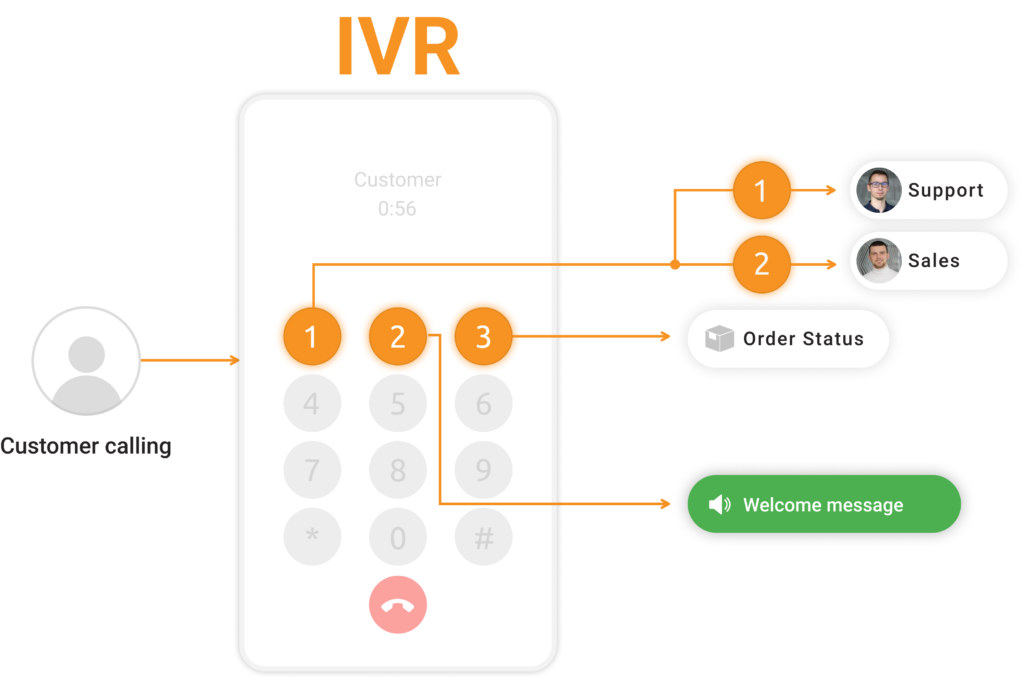
Which tools to use for verifying a caller’s identity?
- IVR – Interactive Voice Response
- verification questions (account number, DOB, etc.)
- notes about the caller’s identity
- CRM system (customer history)
- Ticketing System (ticket history)
- CRM integration with LiveAgent
You should ask questions that are relevant to the customer’s inquiry. Make sure to do so in a polite and professional manner.
Why is it important to ask appropriate questions?
In order to gather necessary information about the caller’s issue and then determine how best to solve it. This way, you’ll be able to resolve issues faster while also improving your customer service.
How to ask appropriate questions?
Customer concerns, issues, and questions vary from one call to another. This means that you need different skills for handling them. Asking appropriate questions can be learned through continuous practice and training.
In addition to having the right attitude towards clients, create a script that guides them through every step of their calls, like what questions to ask first, etc.
Which tools to use for asking appropriate questions?
- call recording tools
- call script software
You should always assure your customers that you are ready, willing, and able to help.
Why is it important to assure a willingness to help?
Providing assistance for your customers shows that you care about their needs and wants.
How to assure a willingness to help?
Listen closely for clues about what the callers might be experiencing. Afterwards, you should ask specific follow-up questions, to determine how to best serve them.
Use your voice tone to convey empathy for your customers’ concerns. This will make the caller feel like they are being heard and understood by someone who knows how best to help them.
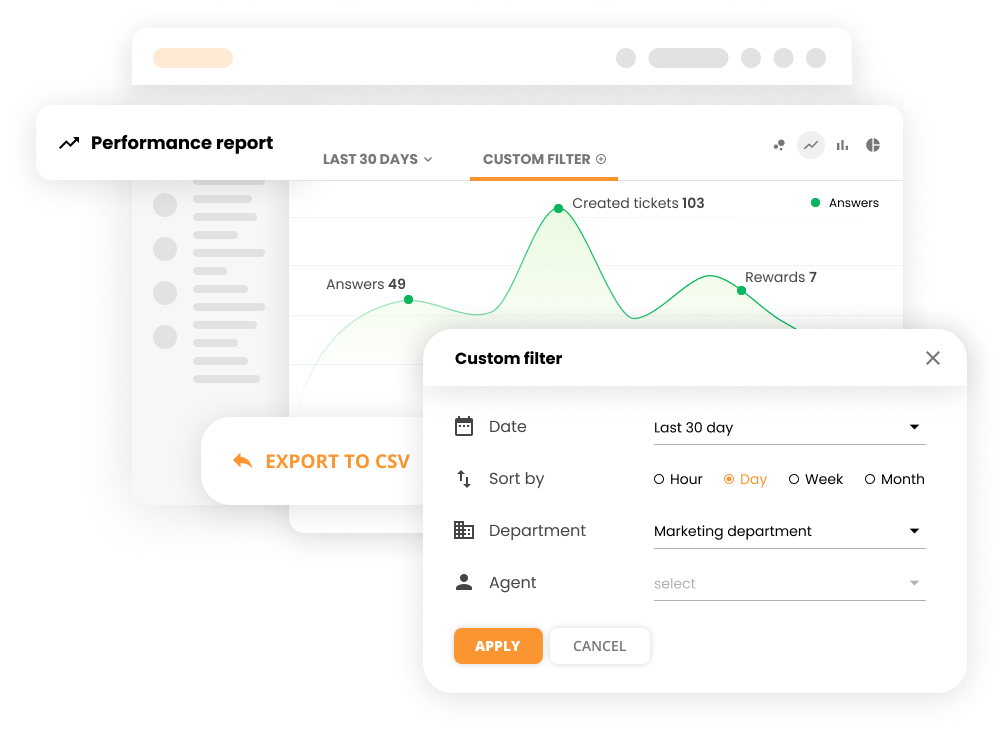
Which tools to use for assuring a willingness to help?
- recordings of agents’ calls with customers
- quality management software – providing insights on your agent’s performance during calls
You should have a caring attitude towards clients. Listen carefully and offer solutions that are best suited for each individual caller’s needs or concerns.
Why is it important to demonstrate empathy?
It shows that you care about your customer’s needs and wants by offering them assistance to solve their issues with a personal touch. This will build trust among your callers, which can lead them to become loyal customers in the future.
How to demonstrate empathy?
First take a moment to listen to what the customer is saying and then ask to clarify questions so that their concerns can be better understood. Listen attentively and show that you’re taking the caller’s concerns seriously.
If you can, try to put yourself in their shoes and understand where they’re coming from. In addition, it helps if you can use tone of voice to convey understanding towards the caller by saying things like “I know what you’re going through” or “That sounds like it’s really frustrating for you”.
Thank them for bringing the issue to your attention and let them know that you’ll do what you can to help resolve it.

Which tools to use for demonstrating empathy?
- soft skills
- active listening skills
- verbal and nonverbal communication skills (manners of expressions, smile)
- an ability to see things from the caller’s perspective
- audio recordings of customer interactions to note the amount of positive or negative emotions expressed during calls
A good agent is one who can ask their customers what they want from an interaction. If you know what they want, it will be easier to offer a solution that satisfies those needs or concerns.
Why is it important to ask how customers want their problems resolved?
When agents don’t spend enough time on this step, they might fail to resolve a customer’s issue completely and not only frustrate them but also make matters worse for everyone involved. Speed up the resolution process by finding out what the customer needs right away.
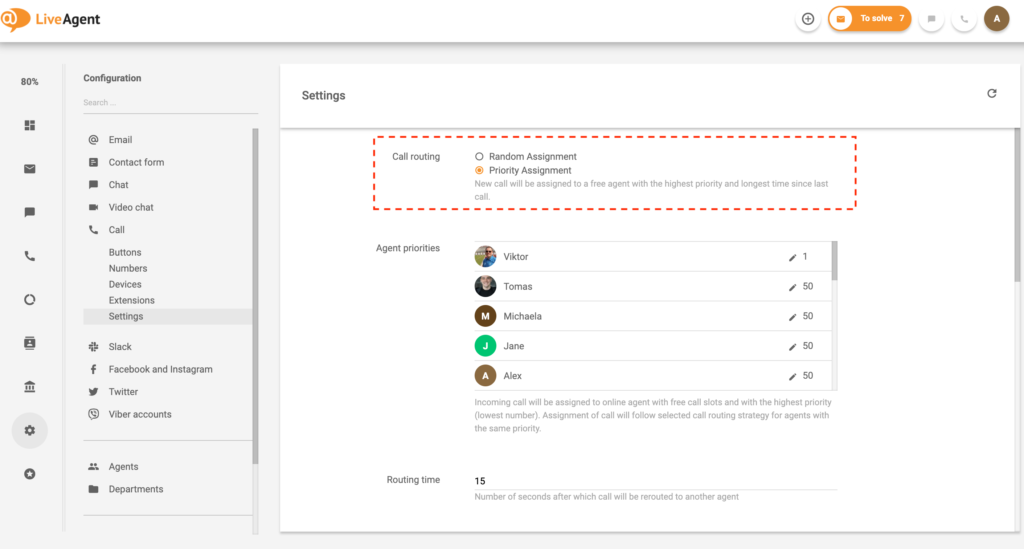
How to ask how customers want their problem resolved?
Start by asking the caller what their preferred resolution is. This could be anything from wanting a refund to simply hearing an explanation about what happened. Customer expectations should be a priority here.
If you’re not able to resolve the issue right away, let them know that you’ll get back to them as soon as possible with a solution. Keep in mind that if you don’t have enough product knowledge, some customers might want to speak to another person in your company about their concerns before making any decisions.
Which tools to use for asking how customers want their problems resolved?
- call script
- problem-solving skills
- ACD – automatic call distribution
If you’re able to set realistic expectations with your customers, it helps resolve the issue in a more timely and satisfactory manner.
Why is it important to set expectations and a timeframe?
It helps avoid any confusion or misunderstandings that might occur during the call. Doing so will also let your customer know what to expect from you and how long the resolution process might take.
How to set expectations and a timeframe?
Let the customer know what is happening and what they need to do. Try to be clear and concise with your instructions so that there’s no room for misinterpretation on either side.
Also, inform your customers of any steps that they need to take in order to resolve their issue. For example, you might tell them what documents need to be sent over or how long it will take for a refund to be processed, if applicable.
If possible, give them an estimated timeframe for when they can expect a resolution.
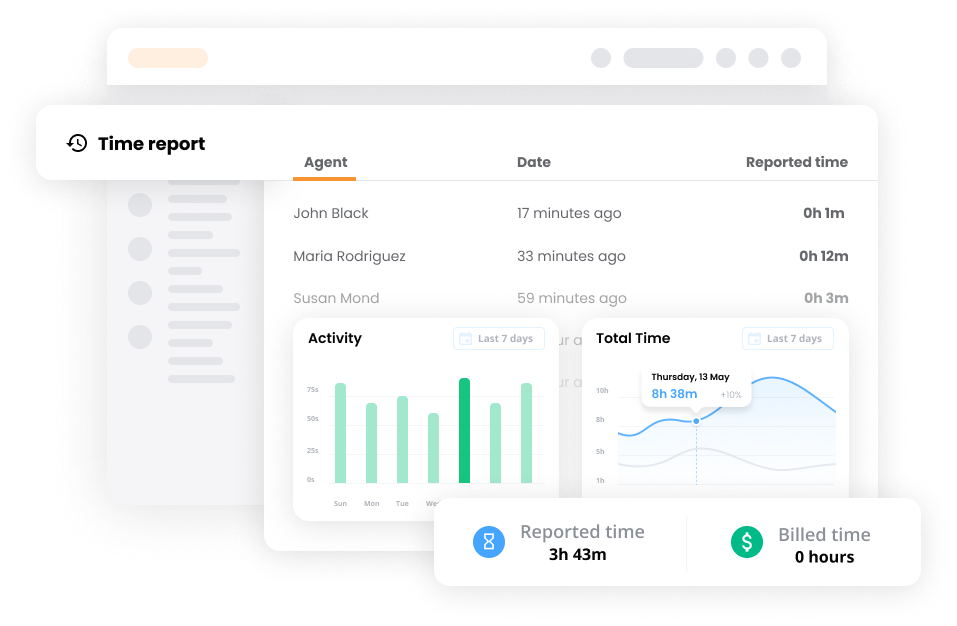
Which tools to use for setting expectations and a timeframe?
- company’s document with clear regulations about resolving different issues (so the agent will have something to fall back on)
- time tracking tool for overseeing time management
- case studies
- training
If a customer’s issue can’t be resolved by an agent on their own, it might be necessary to transfer the call to a supervisor or someone else in your company.
Why is it important to transfer calls?
It can help resolve the customer’s issue more quickly and effectively. In some cases, an agent might not have all the information they need to fully resolve the customer’s concern. By transferring a customer to a supervisor or another agent, you’re giving them the opportunity to get all the necessary information and support they need.
How to handle transferring calls?
While the process may vary depending on the company, it is great if your contact center has call center software that makes the whole process much easier. When using LiveAgent call routing, you can transfer a call with one click.
Otherwise, you’ll need to transfer them yourself by asking for permission first and then calling the supervisor or another agent in your company who can help resolve the issue. That might be very time-consuming and increase your customers’ frustration.
Tip: agents should always make sure they’ve done everything in their power before transferring callers over, as to not waste any more time for them than absolutely necessary.
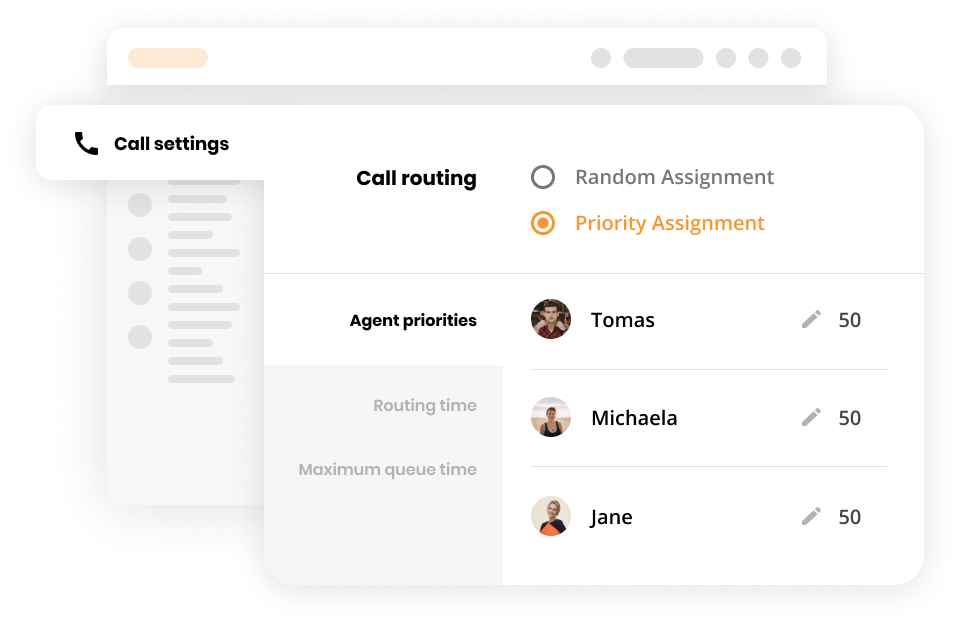
Which tools to use for transferring calls?
- QA management software that will automatically take notes and create reports from transferred calls if required
- LiveAgent call routing, automating the process
- transfer button in the app – LiveAgent
- transfer button on a phone
Once the agent has all the necessary information, it’s time to start resolving the caller’s issue.
Why is it important to offer appropriate solutions?
It’s the goal of every customer service representative to resolve every issue as quickly as possible so that customers won’t have to spend any more time on the phone than absolutely necessary.
How to offer appropriate solutions?
You should offer a resolution that is fair, reasonable, and takes into account the customer’s needs. It’s important not to overpromise, so if an agent doesn’t know if a certain solution is possible then it is better for them to say so rather than promising something unrealistic.
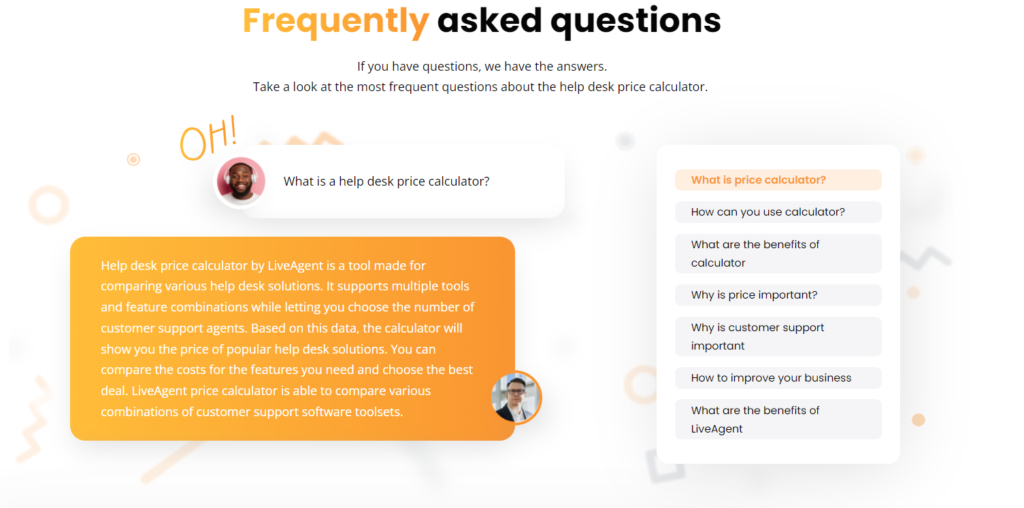
Which tools to use for offering appropriate solutions?
- template for call resolution
- policy manuals
- FAQs
Some customers might be hesitant to agree to a resolution if they don’t understand the costs and benefits of it. To properly explain all pros of a customer’s policy, you must know it thoroughly.
Why is it important to explain the costs and benefits of different solutions?
The caller can make an informed decision about what they want to do and understand what they’re agreeing to.
How to handle explaining the costs and benefits of different solutions?
Provide specific examples and explanations to the customer about how the resolution will benefit them or explain any associated fees. Be clear about any potential risks that might result from choosing one resolution over another.
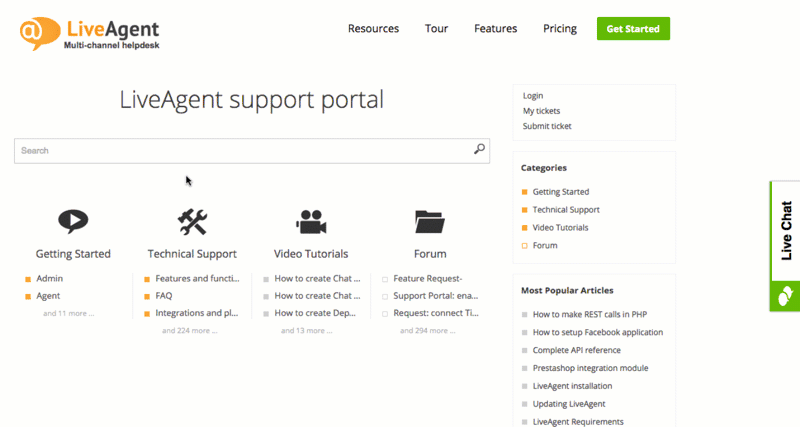
Which tools to use for explaining the costs and benefits of different solutions?
- call script
- knowledge base with policy manuals
- FAQs
Once the customer has agreed to a resolution, it’s important for them to know what will happen next. If they’re going to receive a refund or have something mailed out, when can they expect this to happen?
Why is explaining the next steps important?
Customers want reassurance that their problem is being handled and that they’re not being forgotten.
How to handle explaining the next steps?
Many customers don’t know what to expect after the call ends. That is why agents should always explain what will happen next and how the customer can get in touch with support again if necessary.
Minimize the effort and make sure your customers feel that you’ve taken care of their issue for good.
Which tools to use for explaining the next steps?
- call wrap-up template with action plans explanations
- live chatbot programmed to provide customers with the details they need
Ask if your caller has any further questions before you end the call.
Why is it important to answer all questions?
It gives the agent a chance to wrap up the call and provide a positive ending, as well as let the client ask any final questions if any.
How to handle answering all questions?
Don’t try to hide anything from the customers, and always tell the truth when responding. That means doing so even if what you say isn’t what the caller will want to hear.
Provide contact information so that the customer can get in touch with the support team.
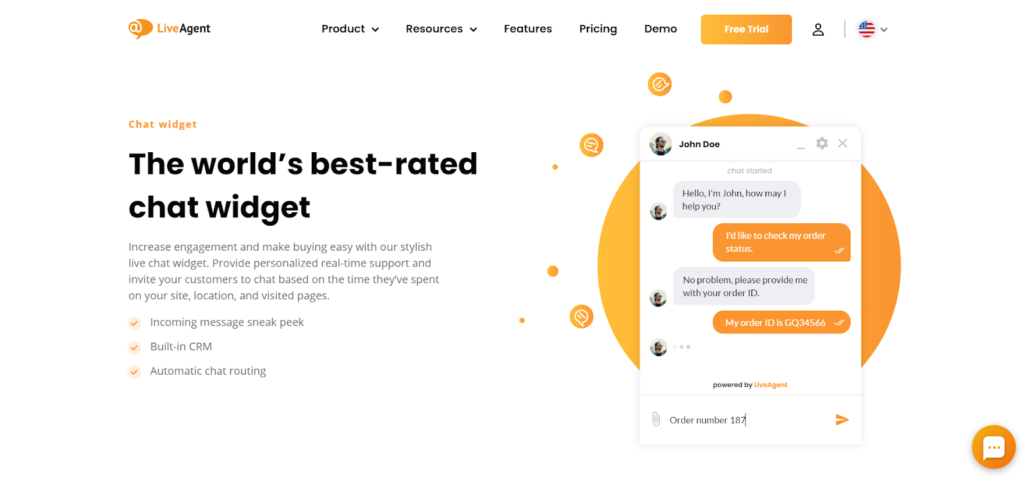
Which tools to use for answering any further questions after the call?
- live chat
- online help center
- FAQs
Take a moment to thank the caller for their time and patience.
Why is it important for the agent to say thank you?
The importance of saying “thank you” can’t be understated – this simple gesture goes a long way toward keeping clients satisfied with their service experience. It also helps to build trust in agents and promotes loyalty by showing care for/toward customers.
How to thank you at the end of the call?
Some agents might prefer a simple “thank you” at the end of calls, while others may want to add a personal touch by addressing the customer by name or adding a little comment.

Which tools to use for saying thank you?
- follow-up message
- closure script
- in person at the end of the call
After a call is over, it’s important to confirm that the customer is satisfied with how things were handled.
Why is confirming customer satisfaction important?
It allows agents to close out calls on a positive note and makes customers feel appreciated.
How to confirm customer satisfaction?
Ask the customer if they’re happy with the resolution and if there were any aspects of the call that they didn’t like, as well as what could have been done better.
Another way is to send a follow-up message with a survey link or further questions about how well the call went. This is probably a much more effective strategy than just asking because people will be more honest if they are not on the phone with a representative of your company. As a result, you will find out their true opinion immediately after the call.
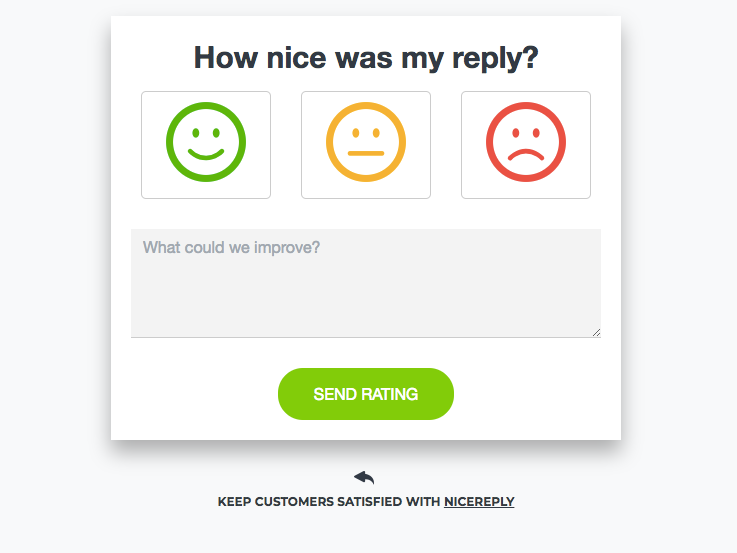
Which tools to use for confirming customer satisfaction scores?
- survey link sent via email or text message
After each call, the agent should evaluate their performance and rate their skills accordingly.
Why is it important to review the call quality?
Identify areas that need improvement or training so that agents will be more prepared for any situation that might arise while handling calls.
How to review the call quality?
The simplest way is for the agent to rate their own performance after each call, but another option is for a supervisor or other manager to do this on behalf of the agent.
You can also think about some motivational programs for agents to e.g. reward the highest-performing call center employees. Such an example is LiveAgent gamification. It brings some game elements to the work environment and engages the agents by rewards, rankings, and many other customizable features.
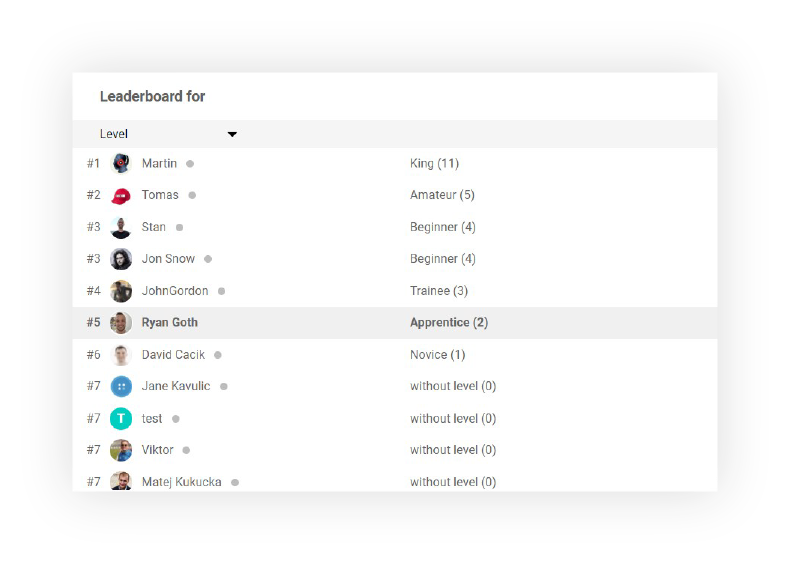
Which tools to use for reviewing the call quality?
- call center monitoring forms
- motivational programs
- call center software
- LiveAgent gamification
Feedback is more the responsibility of supervisors than agents. They should guide agents through the process of improving their performance.
Why is it important to give feedback?
Careful evaluation allows agents to learn from mistakes and grow as customer service professionals. This will result in higher customer satisfaction ratings overall.
How to give feedback?
The best way is with formal processes such as one-on-one/online meetings between supervisors and agents to discuss how each call went and what could have been done better next time around, etc.
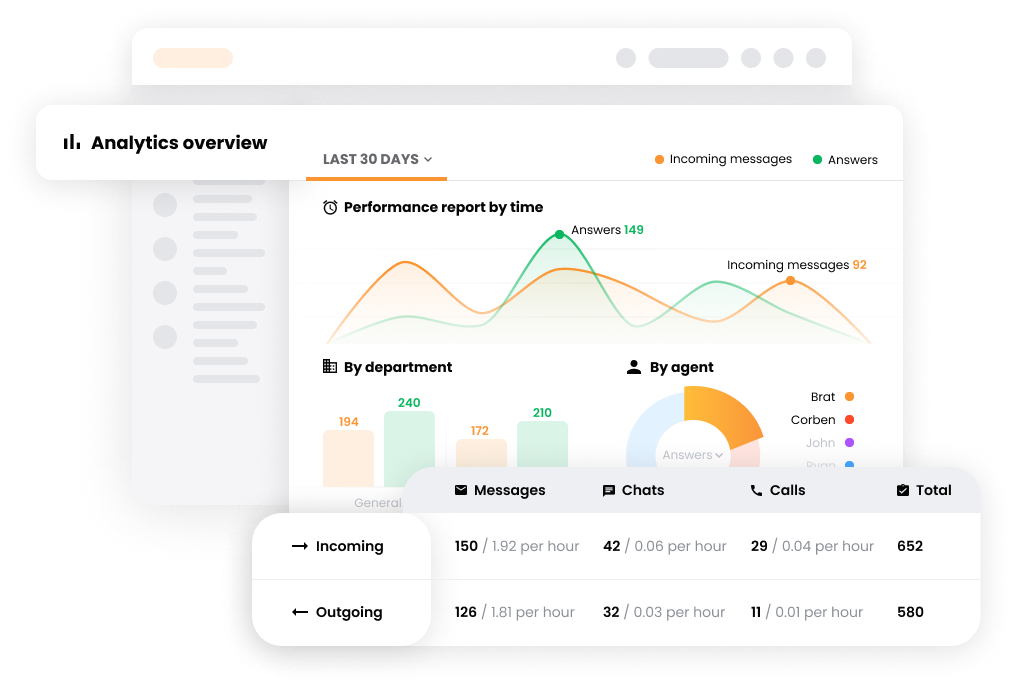
Which tools to use for giving feedback?
- customer insights
- call recordings
- analytics data from the call center software
- customer satisfaction survey results
If the agent’s performance does not meet your standards, refer them for training.
Why is it important to refer agents for training?
Training can help agents improve their skills and become more effective at providing customer service.
How to handle referring agents for training?
You may schedule a training session with the agent or provide them with additional resources to help improve their performance. Always provide opportunities for growth to all of your agents by providing educational courses or on the job training.
Which tools to use for referring agents for training?
- coaching evaluation form
- online educational platform
- regular trainings
How to use the call center quality assurance checklist
The following is a list of tips on how you can use our call center monitoring checklist:
- Before each call, take a few minutes to review the items on the checklist. This will help you get prepared for the conversation and ensure that all your bases are covered.
- If you are having trouble with a customer, refer to the checklist for guidance on how to handle the situation.
- After each call, use the checklist to evaluate your performance and see where you can improve.
- Use the checklist as a training tool for new employees. This will help them learn what is expected of them when they take calls.
Summary of the call center quality assurance checklist
- Start recording the call
- View relevant information in advance
- Prepare for the call with LiveAgent
- Answer the call within X seconds
- Verify the caller’s identity
- Ask appropriate questions
- Assure a willingness to help
- Demonstrate empathy
- Ask the customer how they want the problem resolved
- Set expectations and timeframe
- Transfer the call to a supervisor/another agent
- Offer an appropriate solution
- Explain the costs and benefits
- Describe the next steps
- Answer all questions
- Say thank you to the customer
- Confirm customer satisfaction
- Review the score
- Provide feedback to the agent
- Refer the agent for training (if necessary)
Frequently Asked Questions
How can quality assurance improve call center?
By implementing a structured quality assurance program, call center agents can receive regular feedback on their performance, leading to improved customer service. Quality assurance can also help identify any trends or patterns in customer issues, leading to more efficient problem-solving and resolution. By consistently maintaining high standards of service, call centers can build trust and loyalty with their customers.
What are the best practices to improve call center quality?
Investing in comprehensive training programs for call center agents can ensure they have the necessary skills to handle a wide range of customer inquiries. You can also leverage technology such as CRM systems and call center analytics to track key performance metrics, identify areas for improvement, and gain insights into customer behavior. Effective quality assurance programs can also be implemented to monitor and evaluate agent performance, providing valuable feedback for ongoing improvement.
What is quality assurance in a call center?
Quality assurance in a call center is the process of monitoring and improving the quality of service provided by agents. It ensures that each agent provides excellent customer service consistently over time. By monitoring and improving the quality of service provided by agents, call centers can ensure that their customers are happy with the level of service they receive.
How do I measure the quality of a call center?
Monitor call center metrics and key performance indicators such as average handle time (AHT), customer satisfaction, or net promoter scores. You should also evaluate agent performance based on these criteria when you audit recordings or listen to live calls
How do I assure customers?
Assure customers by verifying their identity, asking appropriate questions, and explaining the next steps in a clear and concise manner. Be willing to help customers resolve their issues and ensure that they are satisfied with the resolution.
How to evaluate the quality of a call center?
You can evaluate the quality of a call center by listening to recorded calls, reviewing agent performance metrics (e.g. call length), and asking customers for feedback on their experiences with agents.
Customer service call quality checklist
Ensure top-notch customer service with LiveAgent's call quality checklist. Improve call standards, resolve issues, and boost customer satisfaction!
Understand call centers: function, benefits, and ROI impact
Streamline customer support with LiveAgent's call center. Easy setup, advanced features, free trial & budget-friendly plans. Try now!"
Call center requirements checklist
Set up a successful call center with this comprehensive checklist! Ensure efficiency, scalability, and security with the right tools & tips."
You will be
in Good Hands!
Join our community of happy clients and provide excellent customer support with LiveAgent.

Our website uses cookies. By continuing we assume your permission to deploy cookies as detailed in our privacy and cookies policy.
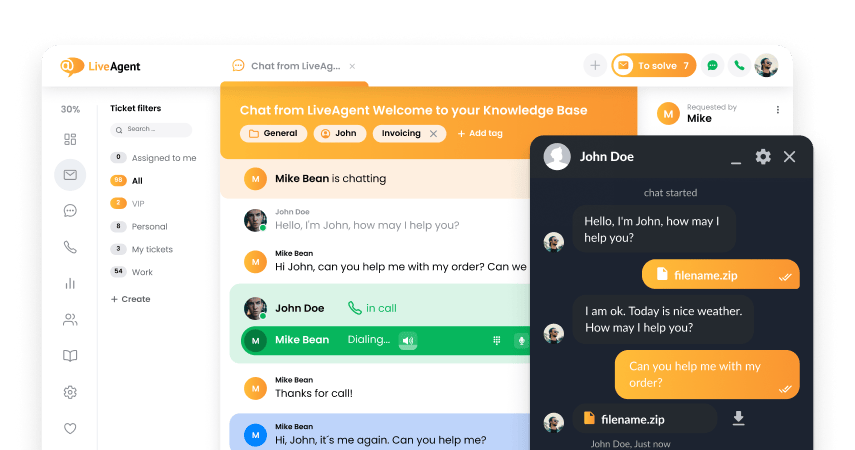
- How to achieve your business goals with LiveAgent
- Tour of the LiveAgent so you can get an idea of how it works
- Answers to any questions you may have about LiveAgent

 Български
Български  Čeština
Čeština  Dansk
Dansk  Deutsch
Deutsch  Eesti
Eesti  Español
Español  Français
Français  Ελληνικα
Ελληνικα  Hrvatski
Hrvatski  Italiano
Italiano  Latviešu
Latviešu  Lietuviškai
Lietuviškai  Magyar
Magyar  Nederlands
Nederlands  Norsk bokmål
Norsk bokmål  Polski
Polski  Română
Română  Русский
Русский  Slovenčina
Slovenčina  Slovenščina
Slovenščina  简体中文
简体中文  Tagalog
Tagalog  Tiếng Việt
Tiếng Việt  العربية
العربية  Português
Português 